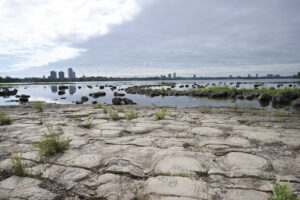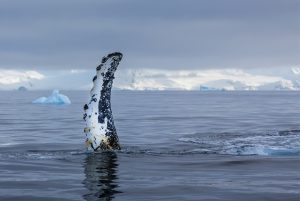A map of surface ocean temperature anomalies in summer 2015, showing a few regions of warming around the globe. While fluctuations in surface temperature are a normal part of the global climate system, new research has found that periods of warming are becoming more frequent, intense, and lasting longer. (Map courtesy Eric Oliver/Dalhousie University)
Oliver says when discussion turns to big-picture subjects like global warming, climate change and the Paris Accord targets, which focus on average temperature increases of 1.5 to two degrees Celsius, the public are left wondering what that really means. He believes people don’t notice or feel an “average” temperature or climate. To many, even a two-degree difference in the average would seem inconsequential.
“What we do tend to feel are the leading edge of the extremes, whether it’s prolonged heat or cold or heavy rain or drought,” he says. The same goes for ecosystems.
“Marine ecosystems have evolved in a typical range of temperatures from a specific cool level up to a warm level and the naturally occurring marine heatwaves sort of set that upper level. But in a warming climate, if these events are becoming more frequent, that upper level is going to be hit more often and maybe with hotter temperatures, and that’s where the leading edge of change is going to be experienced.”
Oliver’s ongoing research is focused in part on forecasting marine heatwaves, with the ultimate goal being to predict up to a year in advance, if not the exact location, intensity and duration of a marine heatwave, then the likelihood of one, so experts and communities can prepare for any kind of disruption to ecosystems or fisheries. He’s concerned about what current trends suggest about the frequency, duration, intensity and impacts of late 21st century events.
“Regardless of what we do with emissions, there’s so much inertia in the system that, even if we stopped emitting greenhouse gases right now, we know these trends are going to continue,” he says. “The globe is going to continue warming for the near future.”
Allan Lynch is a writer and author who lives in Nova Scotia’s Annapolis Valley. He has an interest in history, heritage, travel and ocean industries.





